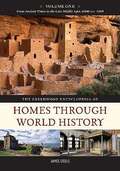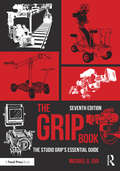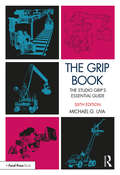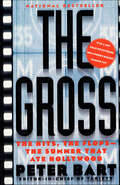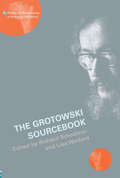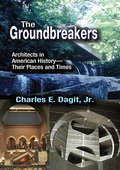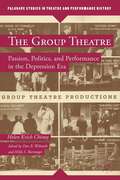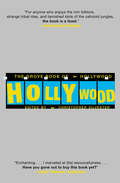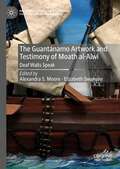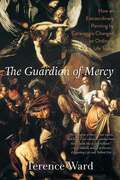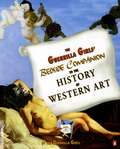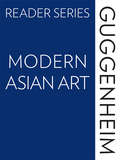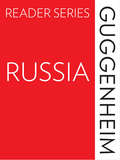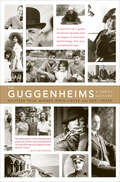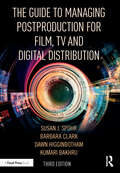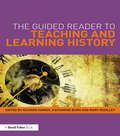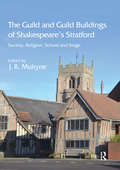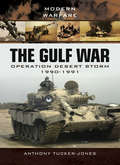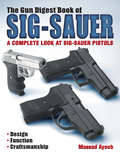- Table View
- List View
The Greenwood Encyclopedia of Homes Through World History, Volume 2: The Renaissance to the Industrial Revolution, 1201–1750
by James SteeleSteele (author and educator, U. of Southern California) provides a comprehensive survey of the housing of significant cultures from throughout the world: the Americas, Africa, Asia and Australasia, East and Southeast Asia, and Europe and the Western Mediterranean. The three-volume set spans the development of housing from ancient times to the present. While the author discusses materials used and methods of construction, he also delves into how the housing of different societies reflects their belief systems, social orders, and cultures. From the relatively familiar stone structures of Macchu Picchu to the Chinese residential districts known as hutongs, the array of architectural styles and the considerations incorporated into their construction--such as environment, light, protection, and available materials--provide a fascinating journey through history. Organized in an encyclopedic format, the set is clearly written, informative, and well-illustrated. Annotation ©2009 Book News, Inc., Portland, OR (booknews.com)
The Greenwood Encyclopedia of Homes Through World History, Volume 3: The Industrial Revolution to Today, 1751 to the Present
by James SteeleSteele (author and educator, U. of Southern California) provides a comprehensive survey of the housing of significant cultures from throughout the world: the Americas, Africa, Asia and Australasia, East and Southeast Asia, and Europe and the Western Mediterranean. The three-volume set spans the development of housing from ancient times to the present. While the author discusses materials used and methods of construction, he also delves into how the housing of different societies reflects their belief systems, social orders, and cultures. From the relatively familiar stone structures of Macchu Picchu to the Chinese residential districts known as hutongs, the array of architectural styles and the considerations incorporated into their construction--such as environment, light, protection, and available materials--provide a fascinating journey through history. Organized in an encyclopedic format, the set is clearly written, informative, and well-illustrated. Annotation ©2009 Book News, Inc., Portland, OR (booknews.com)
The Grip Book
by Michael G. UvaGain the essential skills of a professional grip to become the jack and master of all trades on a movie or television show set. Discover vital insider tips ranging from how to operate cutting-edge rigging and lighting equipment to performing difficult camera mounts on aircraft, boats, cars, and trains. In The Grip Book, Fifth Edition, seasoned Hollywood grip Michael G. Uva teaches you to install, set up, maintain, and ensure the safety of all equipment on a set, such as C-stands, cameras, and any specialty gear needed for a shoot. Guidelines for on-set etiquette and how to succeed as a technical crew member will jumpstart your career and make you a valuable asset on any film or television crew. This newly enhanced edition marks the 25th anniversary of a Focal Press classic and has been updated to include: A 4-color insert covering greenscreen setup Technical expertise on maintaining the latest and greatest filmmaking equipment Engaging how-to videos on the companion website (www.focalpress.com/9780415842372) which demonstrate techniques described in the book A completely new test section with over one hundred questions and answers, allowing you to quiz yourself on the techniques and concepts you've just read Guidelines on what a grip has to be physically able to perform in their day-to-day duties A European-specific appendix that features a table of European grip terms and their American equivalents Whether you are a professional grip looking to boost your skills or an aspiring one just beginning to learn the trade, the time-tested tips and techniques for smooth and safe operation on set make this new edition an indispensable reference guide.
The Grip Book: The Studio Grip’s Essential Guide
by Michael G. UvaGain the essential skills of a professional grip to become the jack and master of all trades on any movie or television show set. This new edition has been fully updated and revised and will enable aspiring and professional grips to discover vital insider tips ranging from how to operate cutting-edge rigging and lighting equipment to performing difficult camera mounts on aircraft, boats, trains, and cars. Seasoned Hollywood grip Michael G. Uva teaches you to install, set up, maintain, and ensure the safety of all equipment on a set, such as C-stands, cameras, and any specialty gear needed for a shoot. Expanded content on navigating the set, including set etiquette and how to succeed as a technical crew member, will jump-start your career and make you a valuable asset on any film or television crew. This seventh edition has been updated to include the latest technology, further explanations of equipment and how to use it for those new to the role, a new chapter on working as a grip on virtual sets. Other features include technical expertise on maintaining the latest and greatest filmmaking equipment; a self-test section containing over one hundred questions and answers; a comprehensive appendix containing a robust glossary of insider and equipment terms; and guidelines on what a grip has to be physically able to perform in their day-to-day duties. The book is ideal for the aspiring or working grip to use on the role, as well as aspiring students looking to break into the industry.
The Grip Book: The Studio Grip’s Essential Guide
by Michael UvaGain the essential skills of a professional grip to become the jack and master of all trades on any movie or television show set. Discover vital insider tips ranging from how to operate cutting-edge rigging and lighting equipment to performing difficult camera mounts on aircraft, boats, trains, and cars. In The Grip Book, seasoned Hollywood grip Michael G. Uva teaches you to install, set up, maintain, and ensure the safety of all equipment on a set, such as C-stands, cameras, and any specialty gear needed for a shoot. Guidelines for on-set etiquette and how to succeed as a technical crew member will jumpstart your career and make you a valuable asset on any film or television crew. This new 6th edition marks the books 30th anniversary and has been fully revised and updated to include expanded coverage of on-set scenarios, such as gripping near water and at heights; a brand-new chapter dedicated to providing insider solutions to various gripping problems that can often appear insurmountable to the uninitiated; and a brand-new companion website featuring a downloadable reference guide on grip equipment, and extensive how-to video demonstrations. Other features include technical expertise on maintaining the latest and greatest filmmaking equipment; an updated self-test section containing over one hundred questions and answers; a comprehensive appendix containing a robust glossary of insider and equipment terms; and guidelines on what a grip has to be physically able to perform in their day-to-day duties.
The Gross: The Hits, The Flops—The Summer That Ate Hollywood
by Peter BartA look at the new Hollywood by the longtime editor-in-chief of Variety. The ultimate insider follows the winners and losers of Hollywood's 1998 Summer Season.Welcome to Hollywood, where gambling is a way of life -- and the wagers run into the hundreds of millions of dollars. But in the summer of 1998 all bets are off. The man who knows every mover, shaker, and faker explains why no one can explain the surprising season. Peter Bart goes behind the scenes like no one can to track the summer movies from development through release. He will reveal why "Godzilla" could never live up to its hype; how intense rivals Robert Redford and Warren Beatty saw their worst nightmares come true when they went head-to-head at the box office; how Jim Carrey's "Truman Show" stole the show; and how Steven Spielberg regained his title of king of the summer in a season where sleepers upset would-be blockbusters. While asteroid movies were colliding with each other, a billionaire newcomer was making superhuman attempts to resuscitate a moribund Universal Studios. With interviews from studio executives, producers, directors, agents, and stars, Peter Bart unveils the winners and losers in the new Hollywood, where creativity and commerce hang in a precarious balance.
The Grotowski Sourcebook (Worlds of Performance)
by Richard Schechner Lisa Wolford WylamThis acclaimed volume is the first to provide a comprehensive overview of Jerzy Grotowski's long and multi-faceted career. It is essential reading for anyone interested in Grotowski's life and work.Edited by the two leading experts on Grotowski, the sourcebook features:*essays from the key performance theorists who worked with Grotowski, including Eugenio Barba, Peter Brook, Jan Kott, Eric Bentley, Harold Clurman, and Charles Marowitz*writings which trace every phase of Grotowski's career from his 'theatre of production' to 'objective drama' and 'art as vehicle'*a wide-ranging collection of Grotowski's own writings, plus an interview with his closest collaborator and 'heir', Thomas Richards*an array of photographs documenting Grotowski and his followers in action*a historical-critical study of Grotowski by Richard Schechner.
The Groundbreakers: Architects in American History - Their Places and Times
by Charles E. DagitIf there is anything to be learned from the history of American architecture it is that it reflects the American adventure in creativity and inventiveness, and the desire to be unique and expressive. In The Groundbreakers, Charles E. Dagit, Jr. examines pioneering American architects and the historical events and trends that gave rise to their achievements. These architects, the caliber of Frank Lloyd Wright and Frank Gehry, created their own distinct, personal styles, and represented the rich heritages of their specific geographical regions.The American pioneer spirit of individualism is alive and well in the architectural world, and like other American innovations, architecture as practiced in the United States is constantly renewing itself and finding new ways to capture the imagination. This book will be of interest to historians, architects, and students in American studies. Illustrations add dimension to the author's observations.
The Group Theatre
by Milly S. Barranger Helen Krich Chinoy Don B. WilmethThe Group Theatre , a groundbreaking ensemble collective, started the careers of many top American theatre artists of the twentieth century and founded what became known as Method Acting. This book is the definitive history, based on over thirty years of research and interviews by the foremost theatre scholar of the time period, Helen Chinoy.
The Grove Book of Hollywood
by Christopher SilvesterThe Orlando Sentinel described The Grove Book of Hollywood as a marvelous overview of the mythical world of Screenland through the eyes of those who observed it firsthand. In pieces by bemused outsiders like P. G. Wodehouse and Evelyn Waugh and consummate insiders like Jack Warner, Ben Hecht, and Budd Schulberg, it tells the story of Hollywood's birth as a dusty village outside L.A., through the blacklist, to its present-day role as a high-stakes cultural capital of power players, touchy egos, schlock, and genius. Full of priceless bits — Jean Harlow's satire of young hopefuls, John Huston's fistfight with Errol Flynn, Frank Capra on working for Mack Sennett, and William Goldman on the ubiquitous Hollywood meeting — The Grove Book of Hollywood is a must for anyone who loves movies. A superb anthology.... A feast for those who love Hollywood and those who hate it. — J. G. Ballard, The Observer (London) Enchanting ... I marveled at [its] resourcefulness.... Have you gone out to buy this book yet? — David Thomson, Bookforum ....strange tribal rites, and tarnished idols of the celluloid jungles, the book is a feast. — L. S. Klepp, Entertainment Weekly
The Grown-Up's Guide to Painting with Kids: 20+ Fun Fluid Art and Messy Paint Projects for Adults and Kids to Make Together
by Jennifer McCullyDiscover the popular art of paint pouring with projects for the whole family!The Grown-Up's Guide series features how-to projects, creative prompts, and crafting activities to inspire hours of messy fun for you and your little ones. Now you can learn the trendy paint pouring technique—and teach your kids to do it too!Paint pouring, also known as fluid art, uses acrylic paint and a variety of everyday tools to create colorful, abstract art poured on canvases and other surfaces. With this book, prepare to get messy—some techniques require touching or even hitting the paint—but that's half the fun. (Consider doing the projects outside, where it's OK to make a mess!) You'll find:An introduction to the affordable tools required to pour paint, from cups and canvases to stir sticks, paper, reusable straws, and more Techniques to familiarize yourself with the pouring process before you startColor mixing tipsInstructions for finishing paintings with varnish and other materialsStep-by-step projects, easily customizable by color, surface, and skill level—with options for non-canvas surfaces such as coasters, pieces of wood, gift boxes, and moreTips on how older kids—with the help of their parents, of course—might even learn to use a heat torch to create the cell-like structure typical in fluid artKids of all ages will love the tactile experience of pouring paint—and you can participate too, enjoying family togetherness for hours as you learn to create colorful, abstract art together.
The Growth and Distribution of Population (Routledge Library Editions: Demography #10)
by S. Vere PearsonOriginally published in 1935, this book examines the causes of global rural depopulation, slum housing conditions and city over-crowding. The falling birth-rate in the West, town planning, ribbon development, emigration and traffic problems are also discussed with particular focus on how they affect the growth and distribution of populations. Social, psychological and economic factors are all considered, as well as those dependent on physical geography.
The Guantánamo Artwork and Testimony of Moath Al-Alwi: Deaf Walls Speak (Palgrave Studies in Literature, Culture and Human Rights)
by Elizabeth Swanson Alexandra S. MooreDeaf Walls Speak presents an insider’s view of artmaking in Guantánamo, the world’s most notorious prison, as self-expression and protest, and to stage a fundamental human rights claim that has been denied by law and politics: the right to be recognized as human. The book juxtaposes detainee artist Moath al-Alwi’s testimony and artwork with essays that situate his work within legal, political, aesthetic, and material contexts to demonstrate that artwork at Guantánamo constitutes important forms of material witnessing to human rights abuses perpetrated and denied by the U.S. government.
The Guardian of Mercy: How an Extraordinary Painting by Caravaggio Changed an Ordinary Life Today
by Terence WardNow celebrated as one of the great painters of the Renaissance, Michelangelo Merisi da Caravaggio fled Rome in 1606 to escape retribution for killing a man in a brawl. Three years later he was in Naples, where he painted The Seven Acts of Mercy. A year later he died at the age of thirty-eight under mysterious circumstances. Exploring Caravaggio's singular masterwork, in The Guardian of Shadows and Light Terence Ward offers an incredible narrative journey into the heart of his artistry and his metamorphosis from fugitive to visionary. Ward's guide in this journey is a contemporary artist whose own life was transformed by the painting, a simple man named Angelo who shows him where it still hangs in a small church in Naples and whose story helps him see its many layers. As Ward unfolds the structure of the painting, he explains each of the seven mercies and its influence on Caravaggio’s troubled existence. Caravaggio encountered the whole range of Naples’s vertical social layers, from the lowest ranks of poverty to lofty gilded aristocratic circles, and Ward reveals the old city behind today's metropolis. Fusing elements of history, biography, memoir, travelogue, and journalism, his narrative maps the movement from estrangement to grace, as we witness Caravaggio’s bruised life gradually redeemed by art.
The Guerrilla Girls' Bedside Companion to the History of Western Art
by Guerrilla GirlsTaking you back through the ages, The Guerrilla Girls demonstrate how males have dominated the art scene and discouraged or obscured women's involvement. Their sceptical and hilarious interpretaions are augmented by other feminists.
The Guggenheim Reader Series: Modern Asian Art
by Francesco Bonami Hans-Ulrich Obrist Edward Fry Alexandra MunroeThe Guggenheim Reader Series: Modern Asian Art is the second installment in an ongoing series collecting out-of-print and hard-to-find essays from past Guggenheim publications and lectures to illuminate focused topics in art history. Much like last fall's Russia reader, Modern Asian Art examines five decades of the museum's interest in the region, culminating in this spring's simultaneous presentation of four separate exhibitions on Asian art in the Guggenheim's New York location. Contributors include Edward Fry, Francesco Bonami, Alexandra Munroe, Hans-Ulrich Obrist, and Gordon Washburn.
The Guggenheim Reader Series: Russia
by The Guggenheim MuseumThe Guggenheim Reader Series: Russia is the inaugural title in a new e-book series that brings together scholarly essays on prominent themes. The Guggenheim has a rich history of exploring Russian art and the avant-garde in particular; this anthology collects the most insightful and influential essays from exhibition catalogues such as The Great Utopia: The Russian and Soviet Avant-Garde, 1915-1932 (1992) and Russia! Nine Hundred Years of Masterpieces and Master Collections (2005), as well as focused monographic studies of Russian masters like Vasily Kandinsky and Kazimir Malevich.
The Guggenheims: A Family History
by Irwin Unger Debi UngerA portrait of a great American dynasty and its legacy in business, technology, the arts, and philanthropyMeyer Guggenheim, a Swiss immigrant, founded a great American business dynasty. At their peak in the early twentieth century, the Guggenheims were reckoned among America's wealthiest, and the richest Jewish family in the world after the Rothschilds. They belonged to Our Crowd, that tight social circle of New York Jewish plutocrats, but unlike the others -- primarily merchants and financiers -- they made their money by extracting and refining copper, silver, lead, tin, and gold.The secret of their success, the patriarch believed, was their unity, and in the early years Meyer's seven sons, under the leadership of Daniel, worked as one to expand their growing mining and smelting empire. Family solidarity eventually decayed (along with their Jewish faith), but even more damaging was the paucity of male heirs as Meyer and the original set of brothers passed from the scene.In the third generation, Harry Guggenheim, Daniel's son, took over leadership and made the family a force in aviation, publishing, and horse-racing. He desperately sought a successor but tragically failed and was forced to watch as the great Guggenheim business enterprise crumbled.Meanwhile, "Guggenheim" came to mean art more than industry. In the mid-twentieth century, led by Meyer's son Solomon and Solomon's niece Peggy, the Guggenheims became the agents of modernism in the visual arts. Peggy, in America during the war years, midwifed the school of abstract expressionism, which brought art leadership to New York City. Solomon's museum has been innovative in spreading the riches of Western art around the world. After the generation of Harry and Peggy, the family has continued to produce many accomplished members, such as publisher Roger Straus II and archaeologist Iris Love.In The Guggenheims, through meticulous research and absorbing prose, Irwin Unger, the winner of a Pulitzer Prize in history, and his wife, Debi Unger, convey a unique and remarkable story -- epic in its scope -- of one family's amazing rise to prominence.
The Guide to Kimono: A Handbook to Identifying, Dating, and Pricing Antique and Vintage Japanese Kimono
by Justine SobocanTo educate people on the basics of kimono.
The Guide to Managing Postproduction for Film, TV, and Digital Distribution: Managing the Process
by Barbara Clark Susan Spohr Dawn Higginbotham Kumari BakhruThe updated third edition of this popular book offers a clear and detailed overview of the postproduction process, showing readers how to manage each step in taking a film, TV, or media project from production to final delivery, from scheduling and budgeting through editing, sound, visual effects, and more. Accessibly written for producers, post supervisors, filmmakers, and students and extensively updated to address current digital and file-based industry practices, The Guide to Managing Postproduction for Film, TV, and Digital Distribution helps the reader to understand the new worlds of accessibility, deliverables, license requirements, legal considerations, and acquisitions involved in postproduction, including the ins and outs of piracy management and archiving. This edition addresses the standards for theatrical and digital distribution, network, cable and pay TV, as well as spotlights internet streaming and various delivery methods for specialty screenings, projection large format (PLF), and formats including 3D, virtual reality and augmented reality.
The Guided Reader to Teaching and Learning History
by Richard Harris Katharine Burn Mary WoolleyThe Guided Reader to Teaching and Learning History draws on extracts from the published work of some of the most influential history education writers, representing a range of perspectives from leading classroom practitioners to academic researchers, and highlighting key debates surrounding a central range of issues affecting secondary History teachers. This book brings together key extracts from classic and contemporary writing and contextualises these in both theoretical and practical terms. Each extract is accompanied by an introduction, a summary of the key points and issues raised, questions to promote discussion and suggestions for further reading to extend thinking. Taking a thematic approach and including a short introduction to each theme, the chapters include: The purpose of history education; Pupil perspectives on history education; Assessment and progression in history; Inclusion in history; Diversity in history; Teaching difficult issues; Technology and history education; Change and continuity; Historical Interpretations; Professional development for history teachers. Aimed at trainee and newly qualified teachers including those working towards Masters level qualifications, as well as existing teachers, this accessible, but critically provocative text is an essential resource for those that wish to deepen their understanding of History Education.
The Guild and Guild Buildings of Shakespeare's Stratford: Society, Religion, School and Stage
by James Morris J. R. MulryneThe guild buildings of Shakespeare’s Stratford represent a rare instance of a largely unchanged set of buildings which draw together the threads of the town’s civic life. With its multi-disciplinary perspectives on this remarkable group of buildings, this volume provides a comprehensive account of the religious, educational, legal, social and theatrical history of Stratford, focusing on the sixteenth century and Tudor Reformation. The essays interweave with one another to provide a map of the complex relationships between the buildings and their history. Opening with an investigation of the Guildhall, which served as the headquarters of the Guild of the Holy Cross until the Tudor Reformation, the book explores the building’s function as a centre of local government and community law and as a place of entertainment and education. It is beyond serious doubt that Shakespeare was a school boy here, and the many visits to the Guildhall by professional touring players during the latter half of the sixteenth-century may have prompted his acting and playwriting career. The Guildhall continues to this day to house a school for the education of secondary-level boys. The book considers educational provision during the mid sixteenth century as well as examining the interaction between touring players and the everyday politics and social life of Stratford. At the heart of the volume is archaeological and documentary research which uses up-to-date analysis and new dendrochronological investigations to interpret the buildings and their medieval wall paintings as well as proposing a possible location of the school before it transferred to the Guildhall. Together with extensive archival research into the town’s Court of Record which throws light on the commercial and social activities of the period, this rich body of research brings us closer to life as it was lived in Shakespeare’s Stratford.
The Gulf War: Operation Desert Storm 1990–1991 (Modern Warfare)
by Anthony Tucker-JonesThis photographic history of Operation Desert Storm vividly captures the drama and humanity of each stage of the conflict. In the early 1990s, the American military led a coalition of United Nations forces to liberate Kuwait from Iraqi occupation. With more than 180 color photographs, The Gulf War provides a remarkable visual account of the conflict, documenting the vast array of military equipment deployed by both sides in the air, at sea and on land. Author and military expert Anthony Tucker-Jones, who was an analyst for British Defense Intelligence at the time of the conflict, describes the armed forces that were ranged against each other, including troops, armored vehicles, artillery pieces and aircraft. He also offers a concise overview of key events, including the preliminary air campaign, the elimination of the Iraqi navy, the coalition's ground offensive, tank battles, the liberation of Kuwait City, and more.
The Gun Digest Book of Modern Gun Values
by Jerry Lee Richard Allen MannThe No. 1 guide to the most popular guns of all time! Today's modern firearms are being bought, sold, and traded at unprecedented volumes. Now, with the completely updated Gun Digest Book of Modern Gun Values, you can buy and sell with confidence. The only illustrated pricing guide to firearms produced from 1900 to the present, this volume sets the standard for gun buyers and sellers. Inside you'll find: More than 25,000 prices for the firearms most frequently bought and sold today, including dozens of new firearms. Updated prices for more than 12,000 rifles, shotguns and handguns, even commemorative editions! Thousands of photos for quick and easy identification. In-depth descriptions for every firearm. Stunning 16-page spread featuring dozens of today's more unique and popular modern guns. Whether you're wanting to sell your old hunting shotgun or looking for a way to compare prices on the hottest tactical rifles and self-defense handguns, Gun Digest Book of Modern Gun Values is your must-have, real-world guide to today's firearms and their values. Don't go shopping without it!
The Gun Digest Book of Sig-Sauer
by Massad AyoobExperience the Quality of a SigNoted firearms training expert Massad Ayoob takes an in-depth look at some of the finest pistols on the market. If you own a SIG-Sauer pistol, have considered buying one or just appreciate the quality of these find pistols, this is the book for you. Ayoob takes a practical look at each of the SIG-Sauer pistols including handling characteristics, design and performance. Each gun is every caliber is tested and evaluated, giving you all the details you need as you choose and use your SIG-Sauer pistol.
